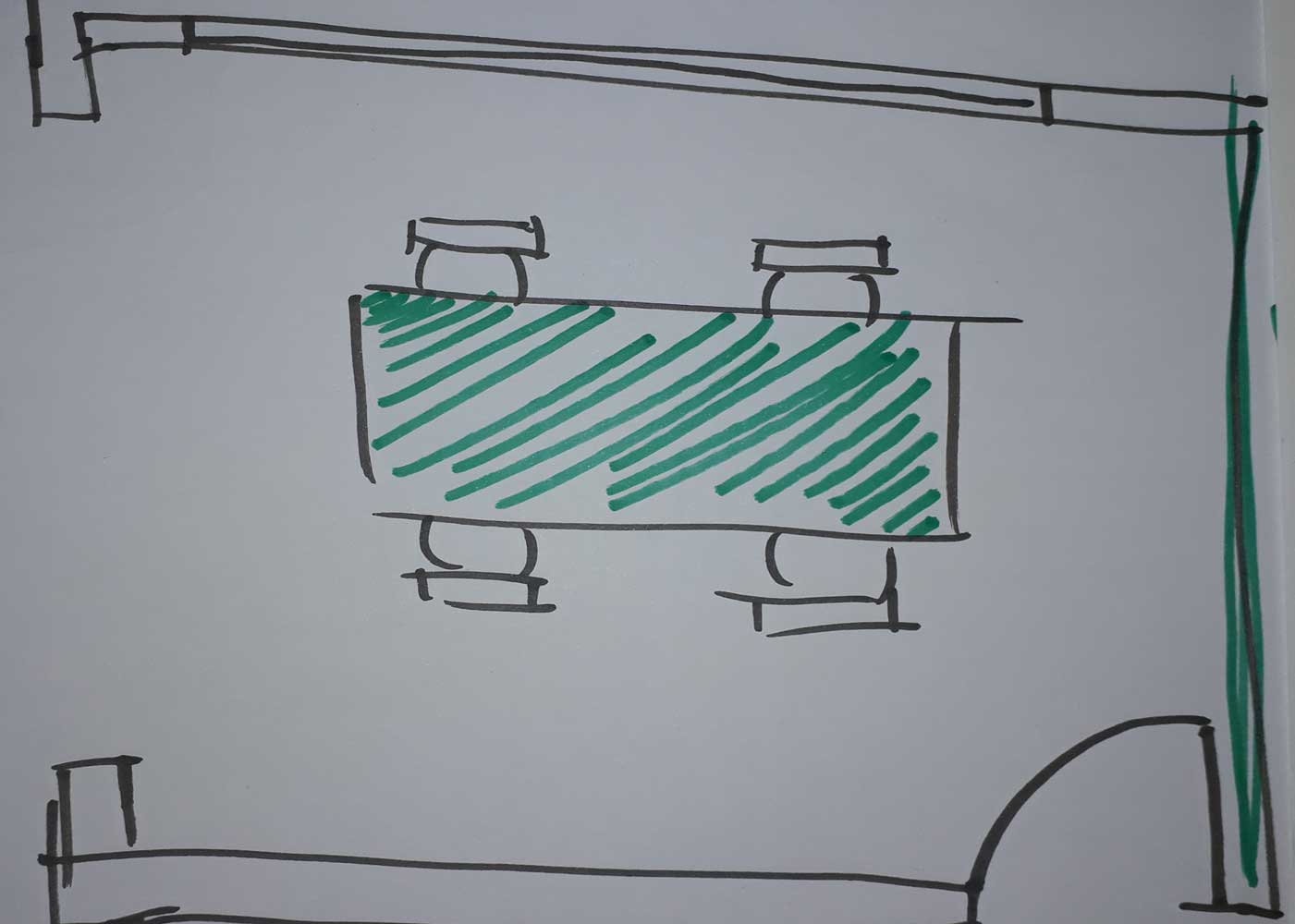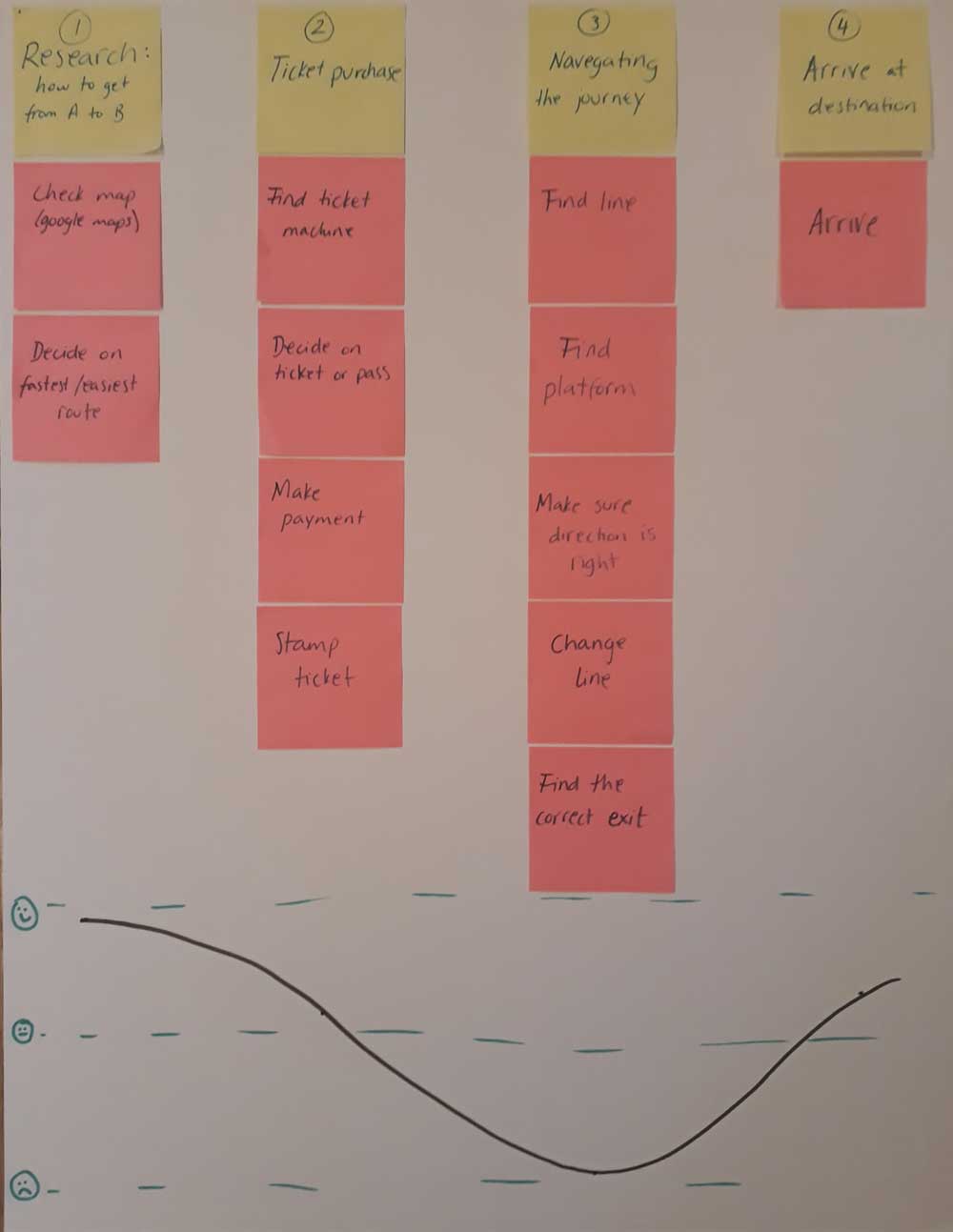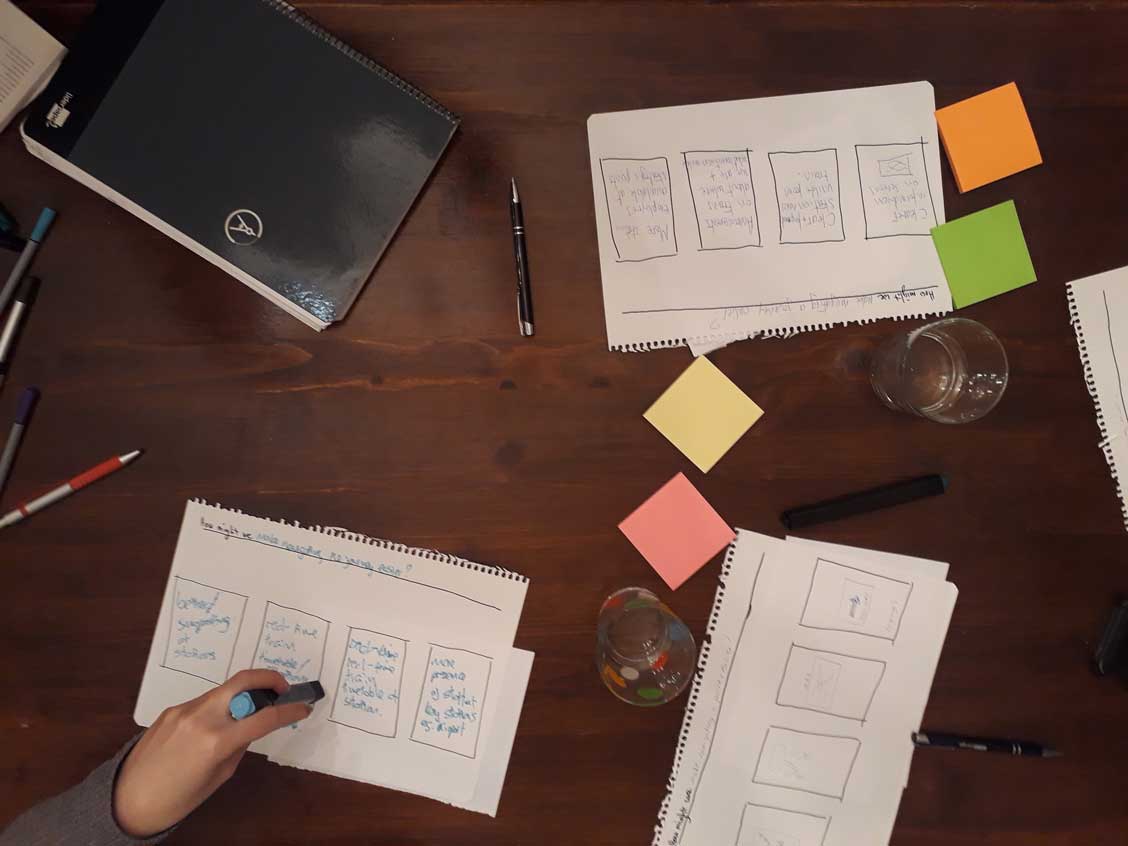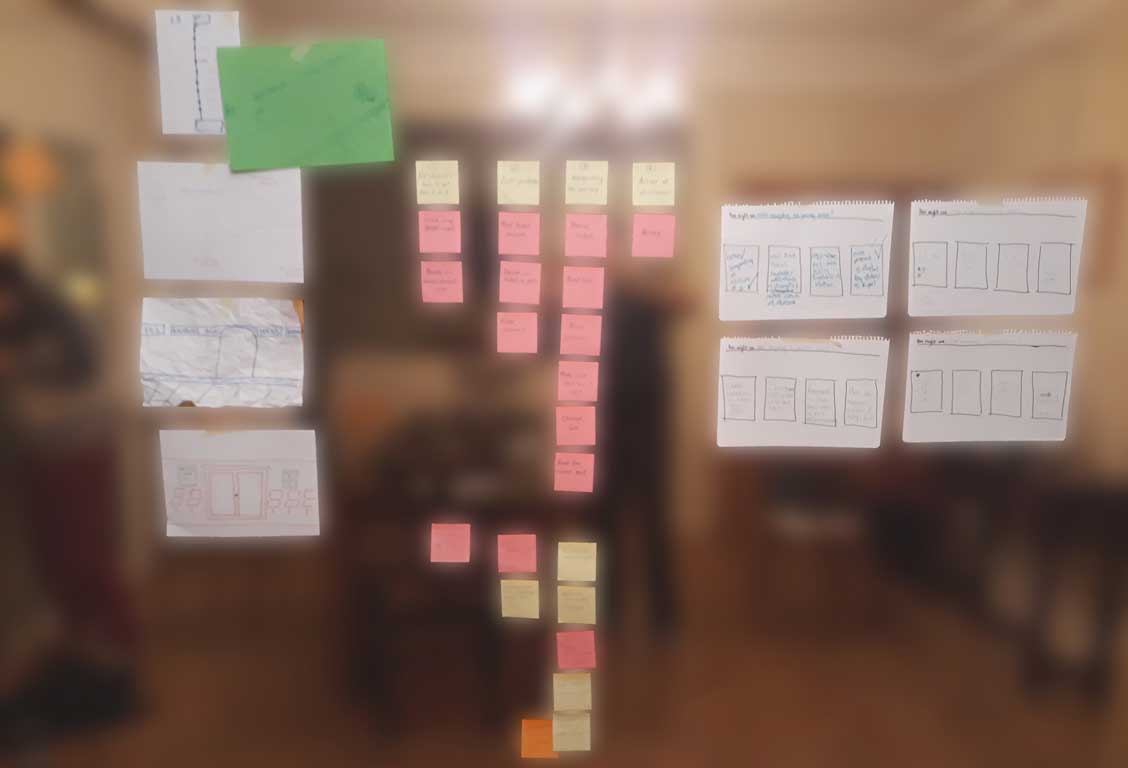Challenge
The goal was to host a design thinking workshop for participants new to design thinking within the space of 2 hours. The overall question we explored was, "How can we improve public transportation?". This was my first design thinking workshop and the following is a summary of the design thinking workshop and reflections to help with future ones.
Participants
I recruited four participants, I knew them personally and they all knew each other, the age range was cross-generational (29–67) and professionally they were from different sectors; a retired school teacher, a tour guide, a public affairs consultant and a marketing director.
The Space
We were sat around a large table (large for 4 people) with easy access to a large wall space to stick up and share the ideas we worked through.

Agenda
Before the workshop I gave the participants homework; to be aware of their next public transport journey, consider the steps one needs to take and any frustration or delight that arises on the journey. I did this to help them prepare for the workshop, to give them every chance to easily express their experiences on the topic: “How can we improve public transportation?”.
Intro 20 min
As mentioned above, the participants knew each other very well so I didn’t bother with icebreaker games. I did however start with a presentation on design thinking to give an overview of what was to be undertaken, the presentation slides can be found here. In hindsight I think it would have been more beneficial to break up the design thinking presentation throughout the workshop. For instance, talk about each stage just before actually doing each stage… e.g. Talk about the Empathy stage immediately before doing the Empathy stage, talk about the Define stage immediately before doing the Define stage etc.

Empathy 20 min
The participants interviewed each other in pairs about their last public transport experience and took notes of pain points and quotes on post-its in order to share their findings with the group.

After hearing all the experiences we voted on a particular experience to make a journey map together. In this particular case we decided on the journey of a tourist using public transport in Madrid, two of the participants had recently had this experience and all participants had had this experience before.
Define 15 min
We found the user’s biggest pain points from the journey map and from these we came up with ‘How Might We’ questions to define the problem. We voted on ‘How might we make navigating the Madrid metro easier for tourists?’ to take to the Ideate stage.

Ideate 20 min
Before moving on to the ideate stage I conducted a little drawing exercise, each participant needed to draw a portrait of their partner in 10 seconds. I copied this idea from Justin Ferrell of Stanford d.School when he did this in his workshop with The Irish Times. I like how this brings some fun into the activity and also reduces the participant’s expectation about the quality of the drawings required for this exercise.

I gave the participants a worksheet with four boxes to draw in and a space to write the How Might We question, this was to help the group to quickly begin and keep the problem statement in mind. They were given 7 minutes to come up with 4 ideas.

After the time was up they presented their ideas to the group and voted on what to prototype. The selected idea to explore was ‘better sign-age at stations’.
Prototype 20 min
The participants explored the idea individually and were given an assortment of coloured paper, tape, scissors and glue to build their prototype. All of the participants chose to draw their prototype.

Testing 15 min
The testing phase of the workshop was limited to the participants, but ideas kept flowing during the presentation of the prototypes and minor modifications were made with feedback from the group.
Feedback
Positives
- ‘Thought provoking, you see the problem in a new light.’
- ‘It was interesting tackling a problem with a group that was cross-generational.’
- ‘I liked that we were building on each other’s ideas to arrive somewhere new.’
What they would change
- ‘More time to tackle more of the problems and test the prototypes outside of the group.’
Personal Reflection
In terms of the structure, next time I would not introduce the whole design thinking process at the beginning. To increase clarity, I would introduce the key ideas and rules for design thinking and then before each step I would introduce that step only e.g. talk about the Empathy stage immediately before doing the Empathy stage, talk about the Define stage immediately before doing the Define stage etc.
The worksheet I make for the Ideate phase worked well, next time I would include worksheets in the Empathise stage too, to make the process of interviewing each other more streamlined and informative.
Overall I was happy with how the workshop went, particularly with the motivation and the sense of pride the participants had in the outcome of the workshop, I feel everyone came away with a positive attitude towards design thinking.